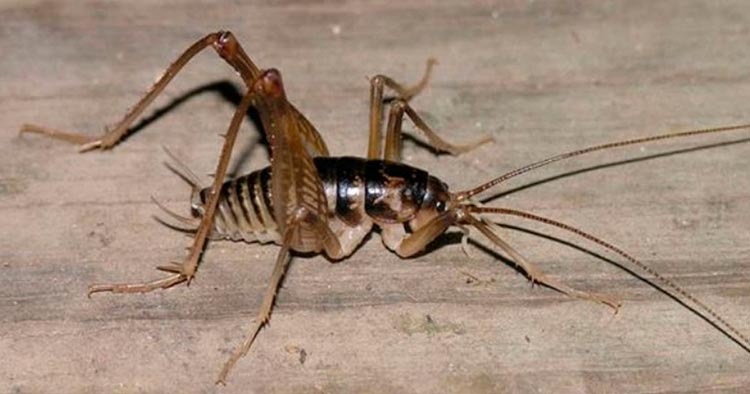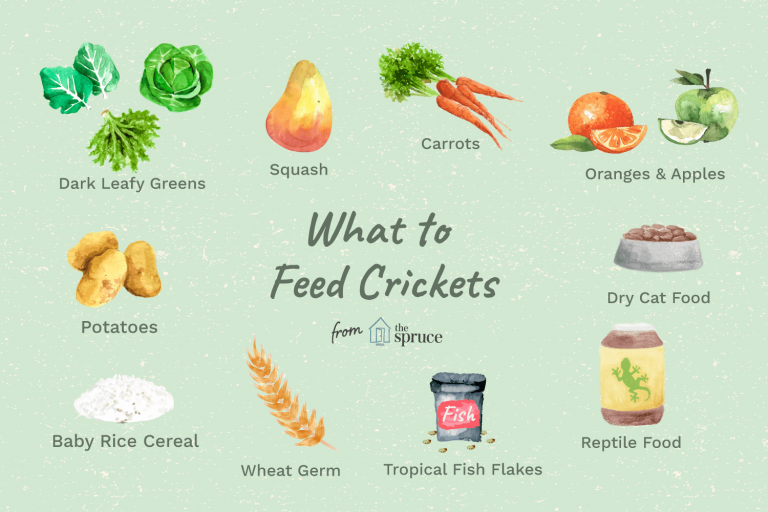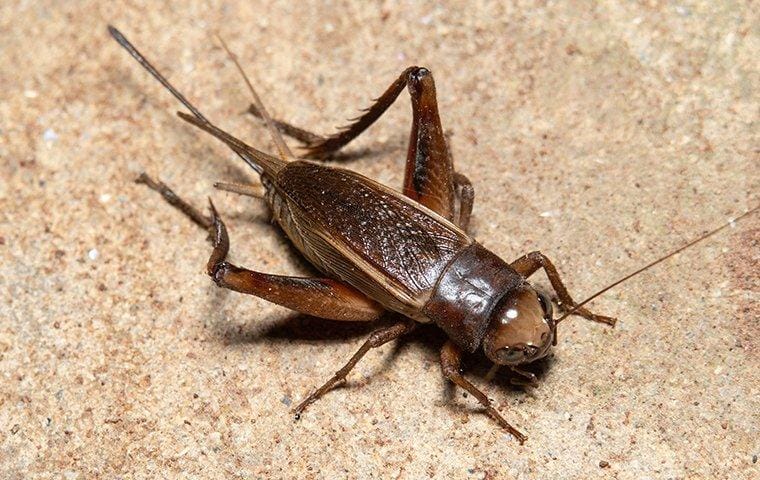SEO Blog
What Do Crickets Eat? Understanding the Cricket Diet
What Do Crickets Eat? Understanding the Cricket Diet
Crickets, small yet vital insects in many ecosystems, have a broad diet that can vary depending on their environment. Whether you’re raising crickets as pets, using them as feeder insects for reptiles and amphibians, or interested in their ecological role, understanding what crickets eat is essential for their health and function. The cricket diet includes a mixture of plant matter, protein sources, and various other foods that provide optimal nutrition for these insects.
Crickets and Their Feeding Habits
Crickets are omnivores, meaning they consume both plant and animal matter. In the wild, their diet is diverse, but in captivity, it’s important to recreate a balanced cricket diet that ensures optimal nutrition. House crickets, which are commonly used as feeder insects, need proper cricket feed that can provide them with essential nutrients like protein, calcium, and other vitamins to thrive. This feeding balance helps in ensuring they remain healthy whether they’re in the wild or in a controlled environment.
What Do Crickets Eat in the Wild?
Crickets in the wild are opportunistic eaters, consuming whatever is available to meet their nutritional needs. They mainly feed on plant matter, such as decaying leaves, grasses, fruits, and vegetables. Crickets eat a range of foods, including flowers and seeds when available. Insects and smaller organisms, such as larvae and pupae of other species, are also part of the cricket diet when plant-based food is scarce.
Wild crickets may occasionally become pests, eating crops and plants, and requiring pest control measures to limit their impact on agriculture. Farmers often employ pest control methods when crickets overpopulate and consume significant portions of plants, leading to potential damage.

What Do Crickets Eat in Captivity?
In captivity, crickets rely on human-provided foods to meet their dietary needs. Providing a variety of balanced cricket food options helps them maintain good health, especially if they are feeder crickets. Cricket food often includes a mixture of vegetables, fruits, and protein-based foods like fish flakes, which are rich in essential nutrients. Commercial cricket food is also available, formulated with the necessary nutrients for optimal health.
Crickets in captivity are also typically “gut-loaded” before being fed to other animals. Gut loading involves feeding crickets nutrient-rich foods like fruits, vegetables, and calcium-rich supplements to ensure they pass on those nutrients to the animals that consume them, such as reptiles and amphibians.
Best Foods to Feed Your Pet Crickets
Crickets in captivity, particularly those used as feeder insects, require a well-balanced diet to stay healthy. Crickets should be provided with both dry and live food options to replicate a natural diet. It’s important to feed them a diverse range of foods that offer proper nutrients, especially if they are intended as food for pets like reptiles.
The Importance of Proper Cricket Nutrition
Just like any other living organism, crickets need a healthy and balanced diet. Providing the right nutrition helps ensure that they thrive in captivity. Optimal nutrition not only keeps them active but also ensures they are an excellent food source for reptiles.
Feeder crickets, when healthy, provide essential proteins, fats, and vitamins to reptiles. Proper cricket feed should include grains, fruits, vegetables, and calcium supplements to ensure balanced cricket nutrition. This way, the reptiles that consume them receive all the necessary nutrients from their food source.

Common Foods Crickets Eat in Captivity
In captivity, you can feed crickets various household foods that are easy to find. Crickets consume:
- Vegetables: Carrots, spinach, kale, potatoes, and squash are excellent vegetable choices.
- Fruits: Apples, bananas, oranges, and berries are great for hydration and nutrients.
- Protein: Dog food, cat food, and fish flakes are excellent protein sources that provide essential fats and amino acids.
You can also purchase commercially available cricket food, specially designed to offer the ideal nutrient blend that these insects need for long-term health.
Protein Sources for Crickets
Crickets require adequate protein, especially if they are being raised for breeding or feeding reptiles. In the wild, crickets obtain protein from consuming smaller insects or decomposing animals. In captivity, you can use alternatives like fish flakes, which offer sufficient protein, or provide commercial live food that can mimic their wild feeding habits.
You can also supplement their protein intake with dry foods like grain-based commercial cricket feed or high-protein pet foods such as dog kibble or dried mealworms.
Frequently Asked Questions About Crickets’ Diet
Do Crickets Eat Meat or Other Insects?
Yes, crickets are omnivores and will consume small insects or decomposing animals if plant matter is scarce. They are opportunistic feeders and will eat what is available to meet their nutritional needs.
Can Crickets Eat Vegetables and Fruits?
Yes, crickets consume a variety of fruits and vegetables. Leafy greens like spinach, carrots, potatoes, and fruits like apples and bananas are perfect for feeding pet crickets in captivity.
How Often Should I Feed My Crickets?
Crickets should be fed every two to three days, depending on their population size and the amount of food you provide. Ensure that there’s always fresh food available, and replace any old food to prevent mold or bacteria from harming your crickets.
Understanding Crickets’ Role in the Food Chain
Crickets as Prey: Who Eats Crickets?
Crickets are a vital part of the food chain, acting as prey for a wide variety of predators. In the wild, they are consumed by birds, reptiles, amphibians, and even larger insects. Crickets eat plants and smaller insects, but they also provide essential nutrition to other species.
Crickets as Feeders for Pets: A Nutritious Option
Crickets are a popular food source for many reptiles, amphibians, and small mammals kept as pets. They are inexpensive, easy to breed, and provide high-quality nutrients to animals such as geckos, bearded dragons, and tarantulas. Live crickets are particularly important because they stimulate a pet’s natural hunting instincts.
Crickets as a Sustainable Protein Source
Recently, crickets have gained attention as a potential sustainable protein source for humans. Edible crickets are being promoted as a low-cost, eco-friendly way to meet protein needs, especially in regions where animal farming is less feasible.
Cricket flour is gaining popularity as a protein-rich alternative to traditional wheat or soy protein products, and crickets can also be consumed whole when prepared and cooked properly. They are high in protein, essential amino acids, and micronutrients, making them a nutritious option for both humans and animals.
Conclusion
In summary, understanding what crickets eat is essential for providing them with the right care, whether you’re raising them as pets or using them as feeder insects. In the wild, crickets consume a diverse range of plant matter, but in captivity, their diet should be carefully curated to ensure optimal nutrition. By offering a balanced mix of vegetables, fruits, and protein sources, you can keep your crickets healthy and ensure that they provide the nutrients needed for animals that rely on them as a food source.

Frequently Asked Questions (FAQ)
-
What do crickets eat in captivity?
- Crickets eat a variety of foods in captivity, including vegetables, fruits, grains, and commercial cricket food. It’s important to provide a balanced diet to keep them healthy.
-
Do crickets eat meat or protein?
- Yes, crickets can eat small insects or protein-rich foods like fish flakes, dog food, or commercial cricket feed that contain essential proteins.
-
How often should I feed my crickets?
- Crickets should be fed every two to three days. Make sure to replace old food with fresh options to prevent mold.
-
Can crickets eat fruits and vegetables?
- Yes, crickets thrive on fruits and vegetables. Carrots, apples, spinach, and bananas are great choices for feeding them.
-
What is gut-loading crickets?
- Gut loading is the process of feeding crickets nutrient-dense food before they are consumed by other animals, ensuring those animals receive optimal nutrition from their diet.
By understanding the dietary needs of crickets, you can maintain their health and use them effectively as a sustainable food source for pets or even humans.
 Skip to content
Skip to content

